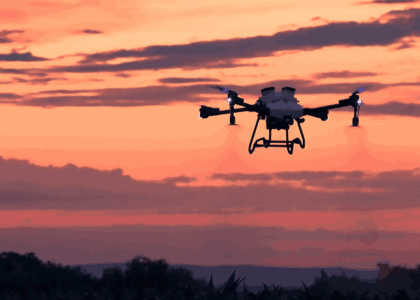In the age of smart technology and energy efficiency, HVAC automation is rapidly becoming a cornerstone of modern building management. Whether you’re a homeowner, facility manager, or business owner, understanding how HVAC automation works can help you save energy, reduce costs, and improve comfort.
This comprehensive guide will explore HVAC automation, its components, benefits, technologies, and how it’s transforming residential and commercial spaces.
What is HVAC Automation?
HVAC automation refers to the integration of heating, ventilation, and air conditioning (HVAC) systems with smart controls and sensors that automatically regulate temperature, airflow, and humidity. The goal is to optimize indoor climate control while minimizing energy consumption and manual intervention.
HVAC automation is a subset of building automation systems (BAS) and is widely used in both residential and commercial settings. It combines software, hardware, and communication protocols to monitor and manage HVAC equipment efficiently.
Key Components of HVAC Automation Systems
An automated HVAC system typically includes:
1. Smart Thermostats
These are intelligent temperature control devices that learn user behavior and adjust heating/cooling patterns accordingly. Examples include Nest, Ecobee, and Honeywell smart thermostats.
2. Sensors
HVAC systems utilize various sensors such as:
- Temperature sensors: Monitor ambient temperature.
- Humidity sensors: Track moisture levels in the air.
- Occupancy sensors: Detect presence in a room to adjust settings accordingly.
- Air quality sensors: Measure pollutants and CO2 levels for ventilation control.
3. Controllers
Controllers are the brains of the HVAC system. They process sensor data and communicate with HVAC components to regulate temperature and airflow.
4. Actuators and Dampers
These mechanical devices adjust airflow by opening or closing ducts and vents based on the controller’s commands.
5. Software & Dashboards
Centralized platforms allow users to monitor, schedule, and adjust HVAC settings remotely via smartphones, tablets, or computers.
How HVAC Automation Works
HVAC automation systems rely on real-time data and algorithms to optimize performance. Here’s a simplified process:
- Sensors collect environmental data like temperature, humidity, and occupancy.
- Controllers analyze the data and decide on the necessary actions (e.g., lowering the thermostat if the room is unoccupied).
- Commands are sent to actuators, fans, or compressors to adjust HVAC operations.
- User interfaces allow manual overrides, schedule settings, and remote monitoring.
Benefits of HVAC Automation
Implementing HVAC automation can provide a range of benefits:
1. Energy Efficiency
By optimizing operations based on occupancy and external weather conditions, automated HVAC systems significantly reduce energy consumption. This leads to lower utility bills and a reduced carbon footprint.
2. Cost Savings
Although there’s an upfront investment in automation technology, the long-term savings on maintenance, energy bills, and equipment wear and tear are substantial.
3. Improved Comfort
Automated systems maintain consistent temperatures and humidity levels, enhancing comfort across various zones in a building.
4. Predictive Maintenance
Many smart HVAC systems include diagnostic features that alert users of maintenance needs before problems escalate, minimizing downtime and costly repairs.
5. Remote Monitoring & Control
Users can adjust settings, troubleshoot issues, or monitor energy usage remotely using apps or cloud-based dashboards.
Applications of HVAC Automation
1. Residential Buildings
Homeowners are increasingly adopting smart thermostats and integrated HVAC controls to customize comfort levels and reduce energy usage. Features like geofencing and voice control (via Alexa, Google Assistant) add further convenience.
2. Commercial Buildings
Offices, shopping malls, and hospitals benefit from HVAC automation by ensuring optimal climate conditions, reducing operational costs, and improving indoor air quality.
3. Industrial Facilities
Factories and warehouses use automated HVAC to maintain temperature-sensitive environments, critical for both product quality and worker safety.
4. Data Centers
Temperature control is essential in data centers to prevent equipment overheating. HVAC automation helps maintain consistent cooling and alerts administrators of potential issues.
Technologies Driving HVAC Automation1. IoT (Internet of Things)
IoT enables HVAC systems to connect with other smart devices, allowing real-time data exchange and advanced automation capabilities.
2. Machine Learning & AI
These technologies allow systems to learn from user behavior and environmental conditions, making predictive adjustments for optimal performance.
3. Cloud Computing
Cloud platforms store system data, enabling remote access, analytics, and software updates from anywhere.
4. BACnet & Modbus
These are communication protocols that allow interoperability between different building automation systems and HVAC devices.
Trends in HVAC Automation for 2025 and Beyond
- Integration with renewable energy sources, such as solar panels, to manage heating and cooling in an eco-friendly way.
- Smart zoning, allowing different areas or rooms to be controlled independently for increased efficiency.
- Voice and AI assistant integration, enabling hands-free HVAC control.
- Greater emphasis on indoor air quality, especially post-COVID-19, with automated systems adjusting ventilation based on real-time air quality data.
- Energy benchmarking and reporting tools for businesses to track sustainability metrics.
Challenges in Implementing HVAC Automation
Despite its benefits, there are challenges to consider:
- Upfront Costs: Initial installation of automation systems can be expensive.
- Compatibility Issues: Older HVAC systems may not be compatible with newer automation technologies.
- Cybersecurity Risks: As systems become internet-connected, they become vulnerable to cyber threats without proper protection.
- Maintenance Complexity: Advanced systems may require skilled technicians for installation and troubleshooting.
Tips for Choosing an HVAC Automation System
- Assess Your Needs: Consider your building size, number of zones, and current HVAC infrastructure.
- Ensure Compatibility: Make sure new systems work with your existing setup.
- Prioritize Security: Choose systems with strong encryption and user authentication features.
- Look for Scalability: Your automation system should grow with your needs.
- Consult Professionals: Always work with certified HVAC automation experts for planning and installation.
Conclusion
HVAC automation is no longer a luxury—it’s a smart investment in comfort, efficiency, and sustainability. From smart thermostats in homes to advanced building management systems in commercial spaces, the automation of HVAC operations is redefining how we think about indoor climate control.
As technology evolves, the benefits of HVAC automation will only increase, offering smarter, greener, and more comfortable living and working environments. If you’re considering upgrading your HVAC system, automation should be at the top of your list.
Frequently Asked Questions (FAQs)
1. Is HVAC automation suitable for older buildings?
Yes, but retrofitting may be required. Consult with an HVAC technician to evaluate compatibility.
2. What is the average cost of HVAC automation?
Costs vary based on the building size and system complexity but can range from $2,000 to $25,000 or more.
3. Can HVAC automation work with solar energy?
Absolutely. Many modern systems integrate seamlessly with solar panels and battery storage for sustainable operation.
For more Informative blogs visit Gimkit.it.com.





